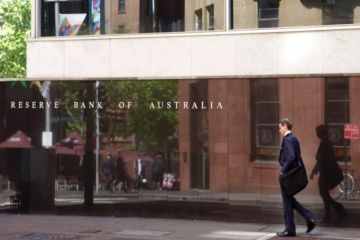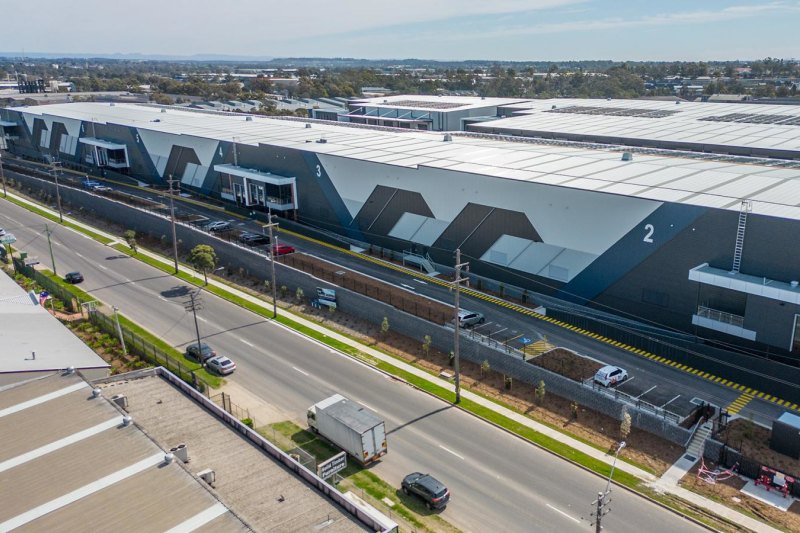What rising interest rates reveal about the future of the property market

Predicting the future state of the property market is a near-impossible task, but examining the trajectory of interest rates could provide some clues.
Here’s what rising interest rates tell us about the current state of the property market and what could be in store for the future.
What are the leading indicators of the property market?
Economists often group insights into lagging and leading indicators when examining the property market.
Lagging indicators account for changes that have already occurred, such as movements in property prices, while leading indicators provide insight into both the current state of the market and a projection of what’s to come.

Interest rates are a key leading indicator, said AMP Capital’s chief economist, Shane Oliver, and so the upward trajectory of rates tells us the property market will likely slow further.
“Those very low fixed rates set off a massive property boom in Australia – we saw home prices surge 25 to 30 per cent,” he said. “With the RBA ditching its yield target back in October, November [last year], the property market has been slowing rapidly since then.”
“And now with variable rates on the rise, it’s adding to the pressure on property prices,” he said.
Higher interest rates have historically led to an eventual downturn in the property cycle, but the culmination of fixed-rate rises in late 2021 and variable rate rises in 2022 have meant the expected downturn is happening earlier than would usually occur, said Oliver.
Auction clearance rates are another key leading indicator of the property cycle, said Oliver.
“When [auction clearance rates are] rising, they tend to be indicative of a strong property market; when they’re falling, they tend to be indicative of a weak property market,” he said. “And, we’ve certainly been seeing falls lately.”

In Sydney, the auction clearance rate fell just below 60 per cent in early May, which could be interpreted as a consequence of the RBA lifting the cash rate, said buyers agent and co-founder of Home Buyer Academy and Suburb Help, Veronica Morgan.
“However, the numbers of buyers at open houses showed a marked increase, so it’s likely that there are other factors contributing to that low clearance rate that we need to keep in mind,” she said.
While clearance rates in Sydney bounced back to 63.9 per cent on the third weekend of May, the first weekend of June showed a marked clearance rate decrease to 54.5 per cent and an increase in withdrawn auctions to 18 per cent, said Morgan.
“As the month progressed, the clearance rate remained steady, and the rate of withdrawn properties remained high,” she said. “At the same time, we observed some out-of-line prices paid for some properties over that period. This inconsistency is typical of a transitional market.”
- Read more: Auction Report – June 2022
Does buyer confidence affect the property market?
Buyer sentiment and confidence levels play a huge part in the outcomes of the property cycle, said Oliver.
“There’s no doubt emotion and sentiment play a huge role in terms of driving when people should get in or not,” he said. “When things are strong, people get in because they fear they will miss out. When it’s weak, it goes the other way.”

Lower levels of buyer confidence in recent months have contributed to slowing price growth, said Morgan.
“Bank economists and the media started talking down the property market in the second half of 2021, and this has the effect of dampening buyer confidence, which meant price growth slowed down quite dramatically.”
What can buyers do to be prepared in the current market?
As interest rates and the property market have changed dramatically in recent months, it’s important to reassess your expectations, said Domain Home Loans’ home loan specialist, Millind Garg.
“Someone who could’ve borrowed $600,000 two months ago may only be able to borrow $520,000 in the current market,” he said. “So, it comes down to resetting expectations around the purchase price and the deposit they’re looking to put down.”
Making sure you can comfortably meet your future repayments if interest rates rise further is another important step in preparing to buy, said Garg.
“For someone getting a mortgage in the current market on a 3 per cent interest rate, the discussion I’m having with them is: these could be your repayments on a 4 per cent, 5 per cent and 6 per cent interest rate,” he said.
While looking at leading indicators can help buyers decide when to enter the property market, timing the market is near impossible, so it’s important to move at your own pace, said Morgan.
“Get your finances ready, understand the due diligence process, know how to work out the right price to pay and move forward with confidence,” she said. “The great thing about a buyer’s market is that you have less time pressure – so, make the most of it.”
Will interest rates continue to rise?
Economists are almost certain we’ll continue to see interest rate hikes until early 2023.
Big four banks’ cash rate target forecasts |
||
| Bank | How high will the cash rate go? | When will the cash rate peak? |
| NAB | 2.60% | Late 2024 |
| ANZ | 2.25% | Mid 2023 |
| Westpac | 2.60% | Early 2023 |
| CBA | 2.10% | Late 2022 |
Information correct at time of publication. Mortgage rates are typically a few percentage points higher than the cash rate.
According to Oliver, we may see another 0.50 per cent increase to the cash rate in August, which will slow after that. By the end of 2022, Oliver predicts the cash rate will be at 2.1 per cent and peak at around 2.5 per cent in early 2023.
“The bottom line is, the RBA, like most other central banks, have become totally focused on getting inflation back down,” he said.
We thought you might like
States
Capital Cities
Capital Cities - Rentals
Popular Areas
Allhomes
More









